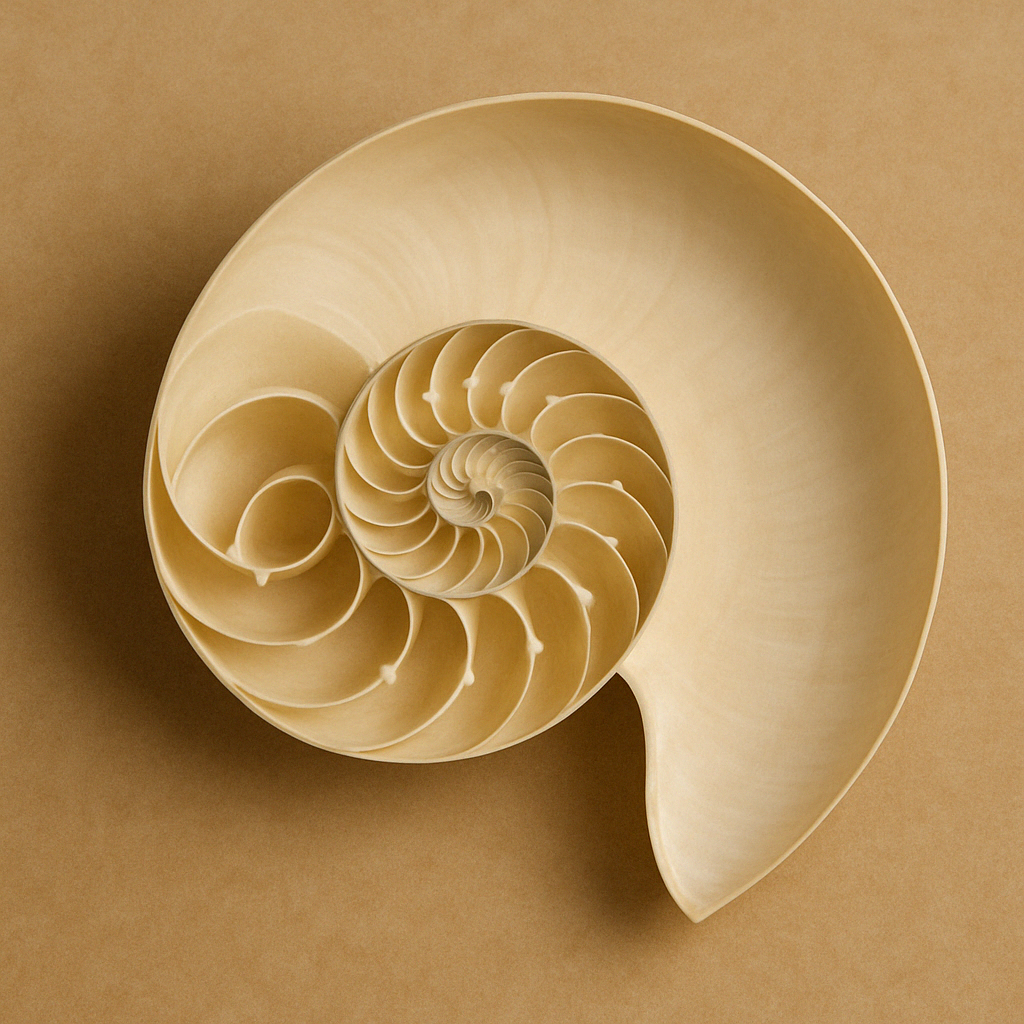If you liked it, please share and comment :)

What is the Fibonacci spiral?
Mike MunayShare
The Fibonacci spiral is the way that we as human beings mathematically describe nature. This spiral is a geometric shape that graphically represents the Fibonacci sequence, whose mathematical formula is determined by:
F(n) = F(n-1) + F(n-2)
Being F(0) = 0 and F(1) = 1
That is, the Fibonacci sequence is a series of numbers in which each number is the sum of the previous two. The sequence starts with 0 and 1, and the first terms are: 0, 1, 1, 2, 3, 5, 8, 13, 21, 34, 55, 89, 144...
Therefore, the Fibonacci spiral is a spiral that looks like this:
But... what is this famous spiral for?
The definition of the Fibonacci sequence and spiral made it possible to mathematically define one of the usual forms on which nature is formed, which is why it has important relevance. The Fibonacci spiral can be found at:
- Nature:
- Nautilus Shells: The shells of some mollusks, such as the nautilus, follow the pattern of the Fibonacci spiral.

- Flowers and plants: The arrangement of petals in many flowers and seeds in sunflowers follow the Fibonacci spiral. For example, sunflowers show spiral patterns in the arrangement of their seeds.
- Pinecones: The scales of pineapples are arranged in spirals that follow the Fibonacci sequence.
- Snails: Many snail shells also feature the Fibonacci spiral in their shape.
- Some spiral galaxies, such as the Milky Way, have arms that follow the pattern of a Fibonacci spiral.

- Art and Architecture:
- The Parthenon: The golden ratio, related to the Fibonacci sequence, is found in the dimensions of the Parthenon in Athens.
- Artwork: Artists such as Leonardo da Vinci have used the golden ratio and the Fibonacci spiral in their works to achieve pleasing aesthetics. The famous painting “The Mona Lisa” and “The Vitruvian Man” are examples.
- Modern architecture: Some modern buildings use the golden ratio and the Fibonacci spiral in their design to create visually attractive structures.
- Computing:
- Algorithms: The Fibonacci sequence is used in algorithms and data structures in computing, such as efficient searching and sorting.
- Market Analysis: Financial analysts use Fibonacci levels in technical analysis to predict movements in the prices of stocks and other assets.
Who was Fibonacci?
Fibonacci, whose real name was Leonardo of Pisa or Leonardo Pisano, was an Italian mathematician born around the year 1170 in Pisa and died around 1250. He is mainly known for having introduced the Fibonacci sequence to Europe, although his contributions to mathematics were much broader.
In addition to the Fibonacci sequence, Leonardo of Pisa made important contributions to number theory and geometry. His work helped spread Arabic mathematical knowledge in Europe and facilitated the development of mathematics on the continent.
Curiosities
- The Fibonacci sequence was introduced in the context of a problem about rabbit population growth in his book “Liber Abaci”. The problem describes a pair of rabbits that, under ideal conditions, reproduce in each cycle and shows how the population grows in the sequence.
- As we progress through the Fibonacci sequence, the relationship between two consecutive numbers approaches the golden ratio (approximately 1.6180339887…), a mathematical constant that appears in many natural and aesthetic forms.
- The Fibonacci sequence has also been used in musical composition. Some composers have structured their works using sequence numbers to determine the length of notes, measures, or entire sections of the piece.
- The sequence begins with 0 and 1, and each subsequent number is the sum of the previous two. A curiosity is that the sum of the first n+1 Fibonacci numbers is equal to the Fibonacci number (n+2) minus one. For example: 0 + 1 + 1 + 2 + 3 + 5 = 12 = 13 - 1.
- The structure of DNA, the molecule that contains the genetic code of living beings, has dimensions that approximate the golden ratio. The length of each complete turn of the double helix is approximately 21 angstroms and the width of the helix is 34 angstroms, numbers that are in the Fibonacci sequence.
- The term “Fibonacci” was coined by the 19th century French historian Guillaume Libri. Leonardo of Pisa was known as Leonardo Pisano during his lifetime and did not refer to himself as “Fibonacci.”

